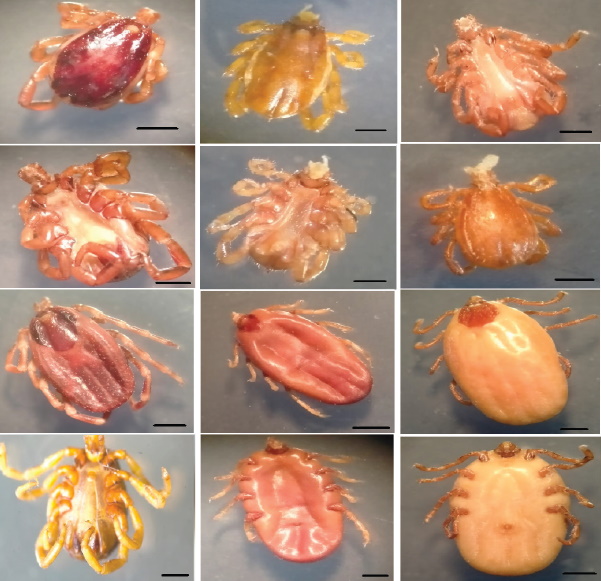Hard ticks infesting domestic rabbits in Quetta district, Pakistan
Keywords:
Domestic rabbit, infestation, knowledge, rabbit owners, tick-borne diseasesAbstract
Domestic animals, wild animals and humans are exposed to a wide range of pathogens (bacteria, viruses, protista) that are transmitted by ticks. This study is significant as being the first attempt to identify ticks infesting rabbits in Quetta district, Balochistan province, Pakistan. Before tick collection, a short questionnaire was designed to assess the knowledge and behaviour of the rabbit owners. Ticks were collected in six months period, from July 2022 to December 2022. The study revealed the presence of three tick species, namely Hyalomma anatolicum, Rhipicephalus sanguineus and R. microplus. A total of 478 hard ticks were collected from 109 domestic rabbits. Higher tick prevalence (53.79%) was observed in autumn than in winter (56.21%). Monthly prevalence of tick species was estimated and found non-significant (p <0.46). Among identified species, infestation rate was highest for R. microplus (n = 288, 60.25%), followed by R. sanguineus (n = 132, 27.62%) and H. anatolicum (n = 58, 12.13%). A non-significant difference was observed between the percentages of infested and non-infested rabbits (X2 = 0.29, p <0.58). There was a high population of male ticks among the collected ticks. Rabbit owners had a poor knowledge about ticks and tick-borne diseases (TBDs). This study emphasizes the need for education and awareness campaigns to improve the knowledge and behaviour of rabbit owners. Overall, this study provides important information on the tick epidemiology of domestic rabbits in Balochistan, which can serve as starting point for future research and design of control strategies for TBDs in domestic rabbits.

Downloads
Published
How to Cite
Issue
Section
License
Copyright (c) 2023 Mir Chakar Baloch, Kashif Kamran, Asim Igbal

This work is licensed under a Creative Commons Attribution 4.0 International License.







